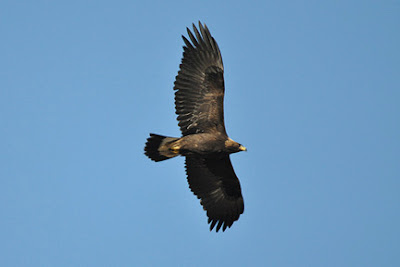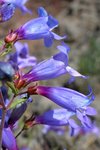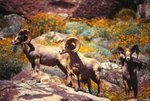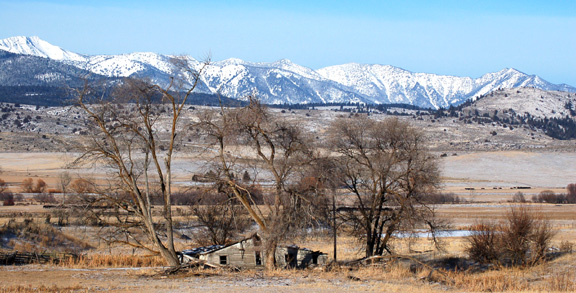American Beaver (Castor canadensis)
The beaver had been trapped to extirpation over large areas in the 1800's, and has also been, like many rodents, much persecuted in the American west. I first ran across them while on vacations from California when I was just a child, and was fascinated by their activities in the riparian areas, as I glanced out the car window in travels through Wyoming, Montana, and Canada.
Recently, I have noticed their expansion in the irrigation ditch running along the west side of Highway 7, as it flows through Bowen Valley, and at a new beaver dam up at the Powder River Recreation Area not far below Mason Dam and Phillips Reservoir. During my time in Utah, I remember that they were shot because of their propensity to dam irrigation ditches or burrow into earthen dams that were unprotected by chain link wire fabric.
They do however serve many valuable functions:
"Besides being a keystone species, beavers reliably and economically maintain wetlands that can sponge up floodwaters (the several dams built by each colony also slows the flow of floodwaters), prevent erosion, raise the water table and act as the "earth's kidneys" to purify water. The latter occurs because several feet of silt collect upstream of older beaver dams, and toxics, such as pesticides, are broken down in the wetlands that beavers create. Thus, water downstream of dams is cleaner and requires less treatment." http://www.beaversww.org/beaver.html
They also provide habitat useful to fish:
"American Beaver
Oregon’s early economy was built on beaver pelts. During the 1800s, by feeding European and eastern American demand for beaver hats and coats, fur trappers virtually eliminated the species from many landscapes through unregulated trapping. With proper management, however, beaver have become re-established and are now common throughout their range. In 1969, the Legislature recognized the American Beaver by naming it Oregon’s state animal. Beavers enhance habitat for many other fish and wildlife species through their dam-building activities. Beaver ponds provide areas for people to fish, hunt and view wildlife. Beavers have reddish brown to black fur, webbing on their hind feet and a tail that is broad, flat, hairless and scaled." (http://www.dfw.state.or.us/conservationstrategy/oregon_state_species.asp#beaver)
Just google it!
Anyway, here are a few photos of the new beaver dam below Phillips Res., where they appear to be feeding on alder and river birch. I've also included a short clip from a film of beaver I took in Utah in 1994.
 Beaver Dam Below Phillips Reseroir
Beaver Dam Below Phillips Reseroir Dam with limbs and bark of food sources chewed clean
Dam with limbs and bark of food sources chewed cleanShort Video of beaver giving alarm call in the Uinta Mountains of northern Utah in 1994:
____________________________
Pronghorn Antelope (Antilocapra americana)
On December 3, 2009, I came across two bands of a Pronghorn Antelope herd on the Foster Ranch in Bowen Valley. They totaled around 74 individuals. Usually I see about 20 or at most 30 in that area, so I called ODFW and they confirmed that it was an unusually large group. Back in 1948, they were quite scarce in Baker County, according to the account set forth in "The Pronghorn Antelope and its management" by Arthur S. Einarsen. They gained the attention of State wildlife agencies in 1935 because of an interest in preserving the species.
Two Photos:
 Pronghorn in Bowen Valley
Pronghorn in Bowen Valley Pronghorn Negotiating Barbed Wire Fence
Pronghorn Negotiating Barbed Wire FencePronghorn can get under fences intended to contain cattle, but traditional sheep fence is a different story. The heavy mesh wire sheep fences in use, at least in the past, in the Great Basin, not only restricted the movement of sheep, but they also restricted the free movement of pronghorn. The mesh wire in the lower 3-4 feet of fence below the barbed wire in sheep fences are a barrier because pronghorn try to go under a fence rather than jump over it. In severe winters, thousands of pronghorn have died in Wyoming after being trapped on the wrong side of sheep fence. One can imagine that such fences come in handy for predators of Pronghorn as well. The once wide open landscapes and ecosystems of the west are now criss crossed and fragmented by hundreds of thousands of miles of fence because of livestock use. For a 1990's photo of sheep fence in the Great Basin, see: http://rangenet.org/projects/wplgalbum/page3/page3b.html
Also note the effects of severe grazing pressure on the private land on the left side of the fence in the photo above.
___________________________
Bald Eagles (Haliaeetus leucocephalus)
I took the following photos just recently above Bowen Valley and by the Burnt River at Bridgeport.
Along Elk Creek Road, someone had dumped two elk carcasses after they had been processed for meat. The attraction for wildlife was great as the temps had been and continued to be in the sub-zero range at night. The carcasses have been attracting eagles all week. Thank god for the carcass dumpers! He fed probably over 8-10 eagles, many ravens and a mob of magpies during a very difficult period temperature wise. They also feed on fish, such as can be secured from Phillips and Unity reservoirs, waterfowl, and mammals. Perhaps as importantly here in Baker County, now that cattle ranching and farming has displaced the pre-settler environment, they congregate around calving operations to feed on the leftovers from birthing.
 Bald Eagle on Juniper near Elk Carcass on Elk Creek Road
Bald Eagle on Juniper near Elk Carcass on Elk Creek RoadAnother almost adult Bald Eagle was soaring above after having gorged itself on the donated carcass:
 Nearly adult Bald Eagle [Classified Sub-adult IV or "Transition"]
Nearly adult Bald Eagle [Classified Sub-adult IV or "Transition"]On a raptor count the next day, I was able to take the following photo of an adult Bald Eagle next to the Burnt River at Bridgeport:
 Bald Eagle at Bridgeport
Bald Eagle at Bridgeport__________________________
Golden Eagles (Aquila chrysatos)
Due to the presence of the elk carcasses, I was able to photograph a Golden Eagle sub-adult (IV) in flight on Elk Creek Road. When they can, Goldens feed on jack rabbits, ground squirrels, waterfowl, and the like, but they, like the Bald Eagle, also feed on carrion.
 Golden Eagle, sub-adult
Golden Eagle, sub-adultThe previous day I had been able to photograph another Golden Eagle just east of Hereford near the Burnt River. Here are two photos:
 Golden Eagle on Western Juniper
Golden Eagle on Western Juniper  Golden Eagle in Flight
Golden Eagle in Flight____________________________
Townsend's Solitaire (Myadestes townsendii)
When visiting the juniper woodlands of Eastern Oregon in winter, the attentive one is likely to hear the plaintive call of the mousy gray-brown Townsend's Solitaire up on the top of a nearby tall juniper. In spring, you may also hear their beautiful song. Charles Bendire, a renowned early American ornithologist, thought, as expressed in a letter from 1874, that it was superior to the song of the mockingbird, although I'm not sure I would agree.
The Solitaire is a Thrush, and thus related to the robin and bluebird.
In winter it feeds on the juniper berry, in competition with the wandering bands of Robins, with whom he is usually found, although in far fewer numbers. They are still fairly common up on Elk Creek Road, despite the fact that many of his favored tree, the Western juniper, have been cutdown recently.
Here is a photo from last week:
 Townsend's Solitaire
Townsend's Solitaire________________________












No comments:
Post a Comment